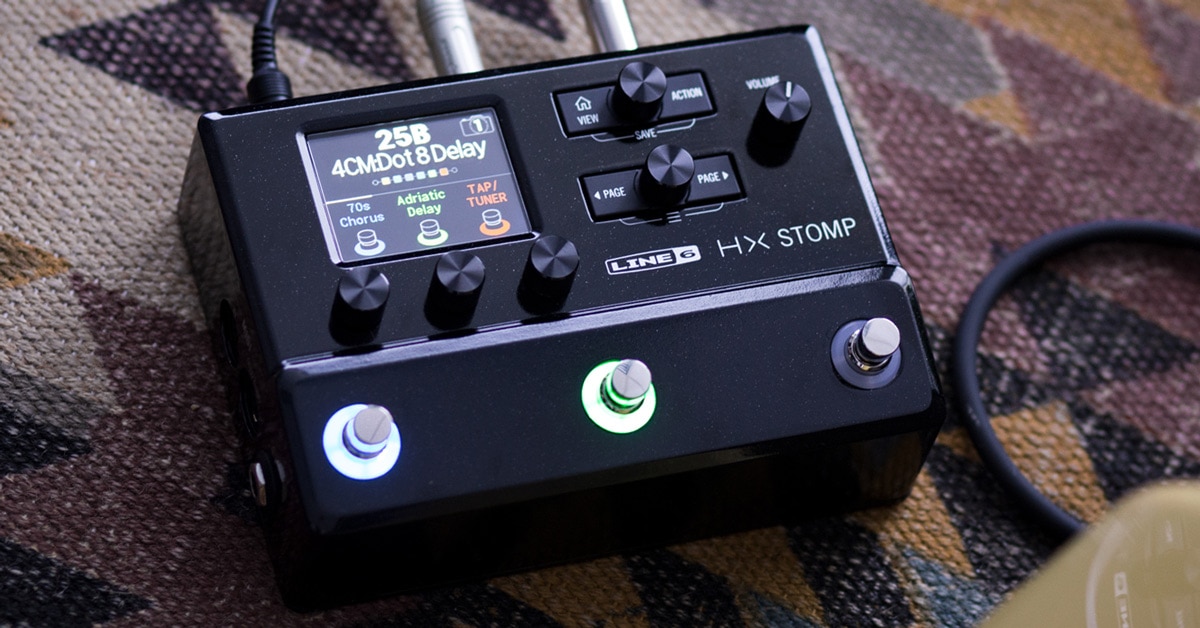Where should you put your money? Into specialized, single-effect pedals? Or go for a versatile guitar multi-processor with a huge range of effects, editing and patch-saving capabilities?
Which is better, individual guitar pedals or multi-effects pedals? After due deliberation, we’ve concluded the answer to this often debated question is: It depends.
Guitar Multi-Effects Units - Pros and Cons
If you’re looking for maximum bang for your buck, multi-effects processors for guitars and basses typically offer dozens or even hundreds of effects in a single unit. And they usually allow you to edit and save effect combinations and settings as presets or patches. Many also can import new sounds via USB . There are a lot of cool multi-effects pedals out there with ability to tweak, twist and transform your sound in a million directions.
But let’s face it. In order to pack all those goodies into one single box, compromises are required. Instead of having dedicated circuits aimed at producing a range of, say, overdrive effects, a multiprocessor uses digital signal processing to emulate those sounds via modeling, impulse responses or some combination thereof. While some DSP effects may blow you away with their ability to mimic dedicated stomps and vintage amps, real tone snobs usually prefer the original pedal or amp on which the simulation is based.

The Line 6 HX Stomp multi-effects pedal includes more than 300 effects and amp models as found in their M-Series, Helix and legacy products.
One downside to multi-effects boxes is a potentially steep learning curve. Some of the more sophisticated units have deep menus that take effort to master. That said, the best units make editing patches and other functions pretty intuitive, and the recent addition of touchscreens, like those found on HeadRush's line-up, has made it even easier. Then again, you’ll likely run into many guitarists who have barely scratched the surface of their multi-effects pedals—they’re happy with the vast selection of effects their unit offers right out of the box.
Using Dedicated Guitar Pedals
If you’re all about tone, a dedicated guitar effects stompbox is more likely to deliver the kind of sound you’re hearing in your head. Generally speaking, given their single-minded nature, single-effect pedals are designed to do one thing really well, from how they sound to how they're laid out. This may mean better sound, which is of course subjective, or more dedicated hands-on controls.

The BOSS OD-3 does one thing and does it well. The OD-3 has a wide range of overdrive sounds with playing dynamics response that gets high marks from players.
On the flip side, buying individual effects can get expensive and brings in some additional considerations including pedal board real estate and additional investments in cabling and a robust power solution.
In Summary
If you’re someone who spends a lot of time experimenting with your sound and pushing the boundaries of what a guitar can sound like, a multi-effects box might make more sense for you. At a moment’s notice you can call up a good fuzz sound for that “(I Can’t Get No) Satisfaction” request.
Conversely, if your focus is on a relatively narrower range of sounds and you’ve got some budget to work with, building a small collection of premium stompboxes is a better way to go.







































































































































